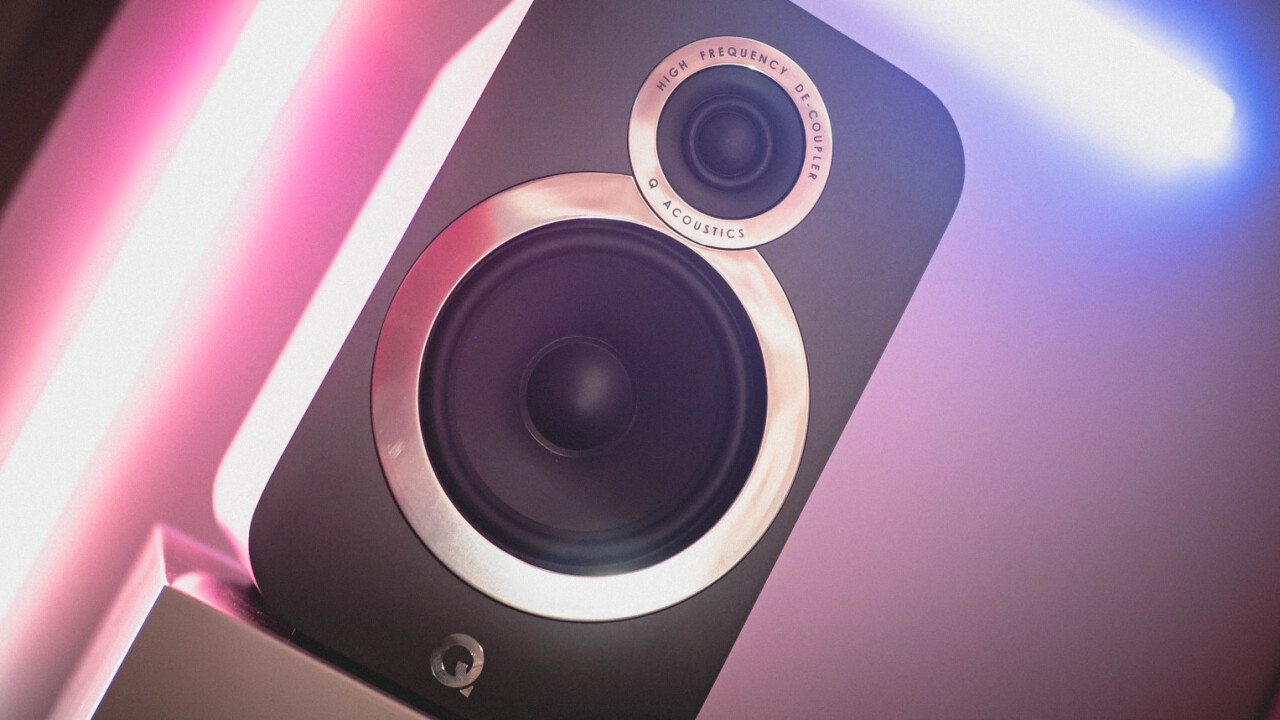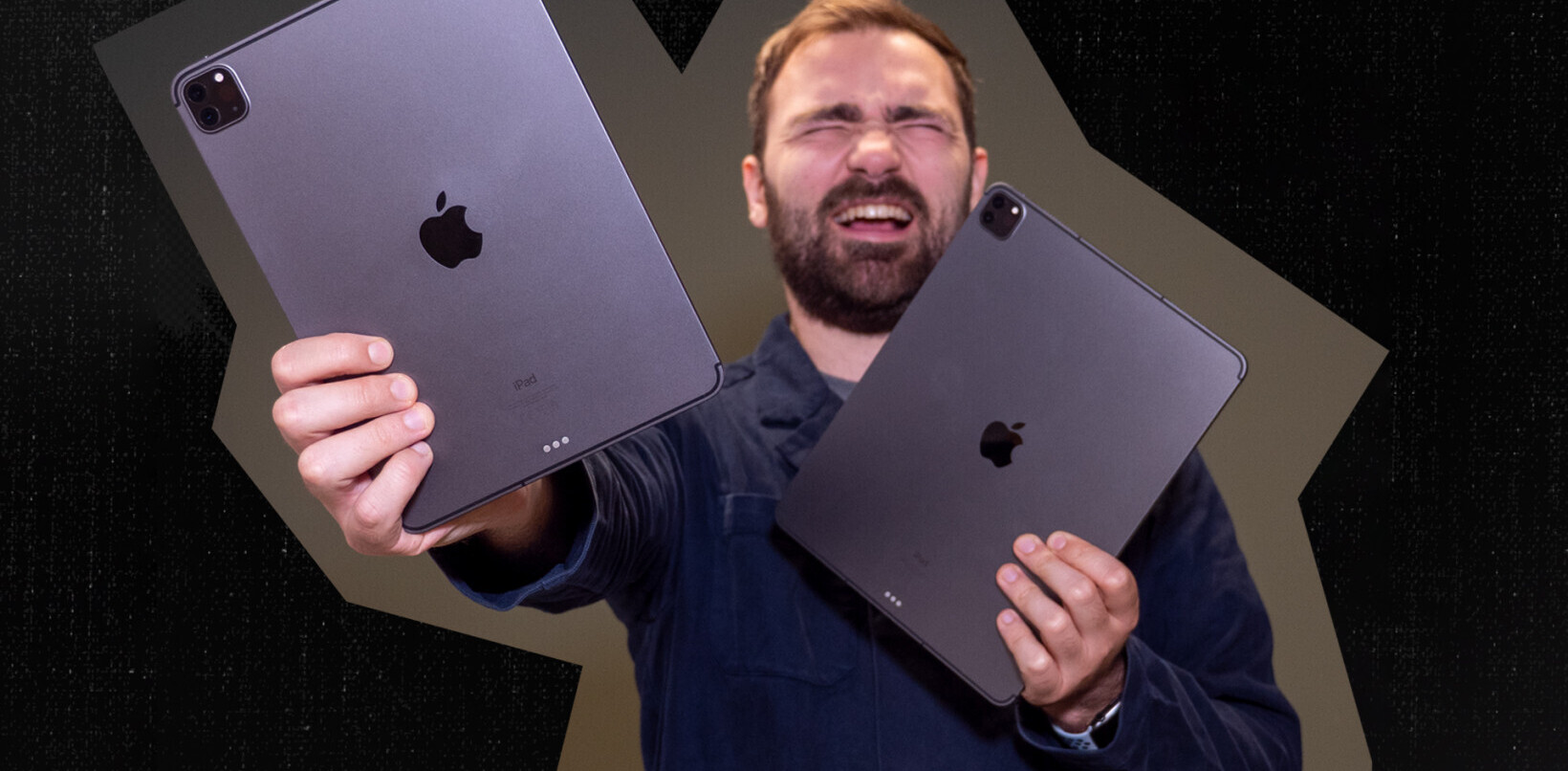
- Product
- 3020i
- Price
- $299.99
British audio firm Q Acoustics might make $4,500 speakers nowadays, but it’s best known for the performance of its affordable speakers. Now that the company has made its entry to the US market, I’ve had the chance to test the 3020i – its midrange speakers – for a few months. At $300, they don’t boast an exotic design, technological gimmicks, or rare materials. Instead, they’re proof of how far good engineering and tasteful tuning will get you.
That’s not to say the 3020i are boring. Aesthetically, I find them both classy and modern: I like how the rounded corners set them apart from the usual boxy fare in this price class. They don’t have the same imposing heft common to more premium speakers – which helps dampen resonances – but Q Acoustics says it’s designed the internal bracing through computer modeling so as to minimize noise from the speaker’s enclosure.

I tested the grey model, but they come in black, white, and walnut colorways as well. I prefer the look and sound with the magnetic grilles off, but they’re an option if you don’t like the shiny chrome framing the drivers. Be warned that the 3020i are significantly deeper than you might assume from the photos. If you plan on putting these on a shelf, make sure it can accommodate the 11.1-inch (282mm) depth, plus another inch or two for the cables.
Let’s get right to it then. The Q Acoustics 3020i sound fantastic – and not just “for the price.” It’s quite the trope to call audio gear ‘transparent,’ but that really is the operative word here. While some would say transparency should be the goal for any speaker, some companies tend to color the sound a bit for that extra touch of pizzazz – a bit of a bass boost, perhaps some added treble crispness, or maybe a forward midrange. The 3020i are my favorite kind of speaker: the sort that gets out of the music’s way as much as possible.
It’s a quality I noticed when I listened to the company’s flagship bookshelf, the Concept 300 in February – that $4,500 speaker I was talking about earlier. Reading that speaker’s whitepaper shows Q Acoustics’ almost-obsessive quest to eliminate extraneous colorations from the sound. It’s safe to say the 3020i doesn’t reach the same level of refinement, but you can tell that same mindset is there, just constrained by budget.
I’ve tested speakers ranging from $300 to $12,000 since receiving the 3020i; perhaps the best compliment I can give them is that I’ve yet to feel like I’ve taken a big step down after returning to them from far more expensive models. The 3020i obviously can’t match more expensive speakers in every regard, but they are more than the sum of their parts. In fact, Q Acoustics’ tuning makes talking about the various parts of the frequency response a somewhat pedestrian affair, because everything pretty much sounds… “correct.” There’s no emphasis on any particular region.
Bass is tight and articulate, but it hits with an authoritative sense of weight for a speaker its size. You’ll want to give them a foot for two of space from the front and side walls if possible, as pushing them closer to your room boundaries can make the bass boomy. That said, Q Acoustics includes some foam bungs you can use to cover the rear bass port to reduce the lows if you’re tight on space. The company rates the 3020i as extending from 64Hz – 30kHz (+3dB,-6dB), which I find errs on the conservative side.
Certainly, the speakers will certainly extend lower in your own home. In my own listening area, I get bass that still provides some oomph in the 30s. Your mileage may vary, but this graph shows how the 3020i (Pink) compares to the $2,000 KEF R3 (Grey) in my room. The R3 is a far larger speaker with a dedicated 6.5-inch bass driver, and it’s officially rated down to 52Hz (-3dB):

Naturally, the R3’s have more energy down low, but not as much as you might assume. I actually found the Bowers and Wilkins 607, which I have not measured yet but are also rated down to 52Hz (-3dB), sounded distinctly lighter in the bass department than either the R3 or 3020i.
The mids on the 3020i are the highlight of the frequency range, with vocals as a particular standout. The 3020i won’t cut through the densest of music the way some more expensive speakers will, but their tonal character and timbre is spot on.
It’s a similar story for the highs, which are detailed without ever delving into harshness. They might even be just a little tamer than I’d like, which could be a problem if you have a very damped room (carpets, big sofas, bookshelves), but this is easy to remedy with a bit of EQ. This is likely due to the slight dip around 2Khz – 3Khz, where a lot of the ‘presence’ and ‘detail’ of music lives. The dip gives the 3020i a bit of laid back sound – other speakers like to bump up this region, giving a forward or even aggressive sound. I preferred to have the speakers angled slightly towards my noggin to get a bit more detail out of the 3020i and a little more focus from the soundstage.
That soundstage, by the way, is wide, deep, and tall – and you don’t need to be perfectly positioned in the sweet spot to get a realistic sense of space. The 3020i is better than most at providing a stereo image that really makes it feel like there are solid instruments floating in the air in front of you.

Let’s look at the 3020i’s frequency response again. This time I’ve performed a gated frequency response measurement, which is a way of ignoring room reflections in the data, thus separating the sound of the speaker from the sound of the room. It imitates the measurements you’d get in one of those cool-looking anechoic chambers.
The caveat is that the technique becomes less accurate the lower in frequency you go, so I’ve cut off data below about 200hz. Above this range, it should paint a decent picture of the 3020i’s sound:

This graph is impressively flat for a passive speaker costing $300, generally staying within a couple of dB throughout the frequency range. Further testing showed the frequency response did not change substantially when measured off center, contributing to the wide soundstage.
Speaker manufacturers have varying philosophies on what the frequency response should look like, sometimes contingent on the speaker’s intended placement. But all else being equal, research shows a flat anechoic response tends to sound best with audiophiles and casual listeners alike (the same is not true of headphones, by the way).
Mind you, I only made these measurements in the past week or so despite having the speakers for months; the graphs just happened to confirm what I heard.
For more perspective, here’s how it compares to the KEF R3 again, as well as the Neumann KH80, two other speakers that roughly aim for a flat response. The latter is a small, $1,000-a-pair studio monitor that achieves the flattest frequency response I’ve tested with the help of digital signal processing:

Again, there’s more to a speaker than frequency response – including many measurements beyond the scope of this review – but it’s the primary measurement we associate with a speaker’s character. The 3020is can’t quite match the R3’s soundstage, dynamics, or raw detail, and they lose to the Neumann a tad in transparency and imaging, but they’re a fraction of the price and I’m impressed they’re able to get as close as they do.
I also outright prefer the 3020i to the twice-as-expensive B&W 607. This might be a matter of taste; the latter present detail much more in your face, but they also have a distinctly bright sound, a softer low-end impact, and a more diffuse stereo image. My sibling, who listened alongside me during one comparison session, came to the same conclusions independently – and without knowing the 3020i’s price. The 3020i’s neutral tonality makes it enjoyable for every genre, unlike more colored speakers that tend to specialize in certain types of music.

That said, I would like to remind readers that I haven’t tried every product out there. Notably, I haven’t heard ELAC’s Debut 2.0, which are some of the most venerated speakers in the price range. And for just $100 more, you can move up to Q Acoustics’ own Concept 20, the company’s flagship bookshelf speaker until earlier this year. One would assume that model would be significantly better, which is a little hard to believe considering the value already on display here.
Still, if you’re looking to spend $300 on a pair of bookshelf speakers, the 3020i have my wholehearted recommendation. For my tastes, they offer the best price-to-performance ratio of any passive speaker I’ve heard to date, trading blows with products that sound two, three, or even four times their price. I’ll let you know what I think of the Concept 20 when I get my hands on them, but the 3020i deserve serious consideration before you think about spending more on a pair of speakers.
This post includes affiliate links to products that you can buy online. If you purchase them through our links, we get a small cut of the revenue.
TNW Conference 2019 is coming! Check out our glorious new location, an inspiring lineup of speakers and activities, and how to be a part of this annual tech bonanza by clicking here.
Get the TNW newsletter
Get the most important tech news in your inbox each week.









